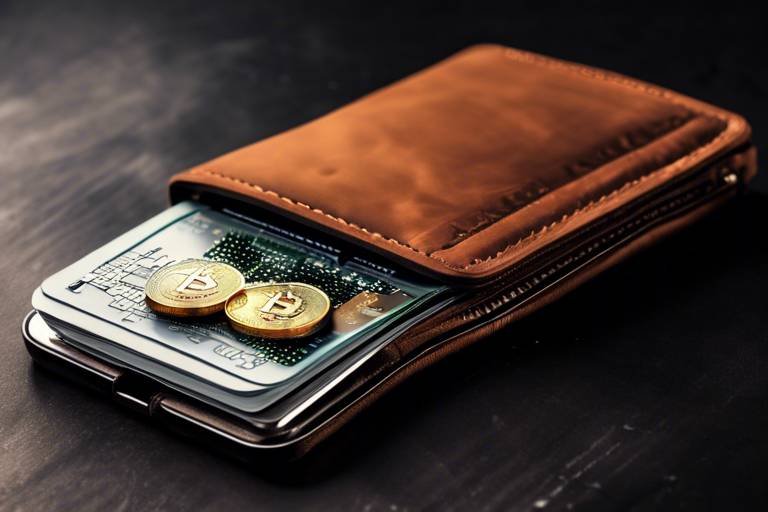Understanding Wallet Market Trends - What to Watch For
The wallet market is more than just a place to store your cash and cards; it's a dynamic arena that reflects changing consumer preferences, technological advancements, and social consciousness. In recent years, we've witnessed a whirlwind of transformations that have reshaped what consumers expect from their wallets. From sleek designs that fit seamlessly into the modern lifestyle to innovative features that cater to tech-savvy users, the wallet landscape is evolving at a breakneck pace. Have you ever wondered why some wallets become instant hits while others fade into obscurity? Understanding these trends can provide valuable insights for manufacturers and consumers alike.
As we delve into the current trends, it’s essential to consider how consumer preferences are shifting. Today’s buyers are not just looking for a functional wallet; they want a product that resonates with their values and lifestyle. The rise of sustainability, for instance, is compelling brands to rethink their materials and production methods. Moreover, with the digital age in full swing, the integration of technology into wallet designs is no longer a luxury but a necessity. Imagine having a wallet that not only holds your credit cards but also syncs with your smartphone for seamless transactions—this is the future that’s quickly becoming a reality.
In this article, we will explore the key factors influencing the wallet market, including consumer preferences, emerging technologies, sustainability practices, and the impact of e-commerce. We will also take a closer look at how brands are strategizing to stay competitive in this bustling marketplace. By the end of our journey, you’ll have a comprehensive understanding of what to watch for in the wallet market and how these trends can shape the future of personal accessories.
Understanding what consumers look for in wallets helps manufacturers tailor their products. Factors include design, functionality, and sustainability, which significantly influence purchasing decisions and brand loyalty. Today’s consumers are more discerning than ever, often gravitating toward wallets that not only meet their practical needs but also align with their personal values. For example, many individuals now prefer wallets made from sustainable materials or those that support ethical production practices. This shift in preference is not just a passing trend; it reflects a broader movement towards conscious consumerism.
Technological advancements are reshaping wallet designs and functionalities. Innovations such as RFID blocking, smart wallets, and digital integration are becoming essential features that attract tech-savvy consumers. Imagine a wallet that protects your credit card information from electronic pickpockets or one that allows you to track your wallet’s location through a smartphone app. These features are not just gimmicks; they address real concerns that modern consumers face in an increasingly digital world.
As environmental concerns rise, sustainable materials and ethical production practices are gaining traction in the wallet industry. Brands that prioritize eco-friendliness are likely to appeal to conscious consumers. Wallet manufacturers are now exploring innovative ways to create products that are both stylish and sustainable. This not only helps the planet but also builds a loyal customer base that values transparency and responsibility in their purchases.
Wallets made from recycled materials, vegan leather, and biodegradable fabrics are becoming popular. These options not only reduce environmental impact but also cater to a growing market segment. For instance, a wallet crafted from recycled plastic not only helps in reducing waste but also tells a story that resonates with eco-conscious buyers.
Transparency in the supply chain and fair labor practices are increasingly important to consumers. Brands that adopt ethical production methods can enhance their reputation and attract more customers. In a world where information is at our fingertips, consumers are more likely to research the brands they support. Therefore, companies that can showcase their commitment to ethical practices will stand out in a crowded marketplace.
The wallet market is competitive, with brands constantly innovating to differentiate themselves. Understanding competitors' strategies can provide insights into market dynamics and consumer behavior. Companies are not only focusing on product quality but also on creating a compelling brand narrative that resonates with their target audience. This narrative often emphasizes the uniqueness of their designs, the story behind the materials used, and their commitment to sustainability.
The rise of e-commerce has transformed how wallets are marketed and sold. Online shopping trends influence consumer preferences, offering brands new opportunities to reach their target audience. With the click of a button, consumers can explore a vast array of wallet options from the comfort of their homes. This convenience has led to an increase in impulse purchases, as shoppers are often swayed by attractive online marketing campaigns.
Effective online marketing strategies, including social media campaigns and influencer partnerships, can significantly boost brand visibility and drive sales in the wallet market. Brands that leverage platforms like Instagram and TikTok can showcase their products in a way that resonates with younger audiences. Engaging content, eye-catching visuals, and authentic endorsements can turn casual browsers into loyal customers.
While e-commerce offers opportunities, it also presents challenges such as increased competition and the need for robust logistics. Brands must adapt to these challenges to succeed in the digital marketplace. This includes investing in user-friendly websites, efficient shipping methods, and responsive customer service to ensure a seamless shopping experience.
As consumer needs evolve, wallet designs are expected to change. Anticipating future trends will help brands stay relevant and meet the demands of their target audience. The future of wallets may include features like built-in charging capabilities, customizable designs, and enhanced security measures. As we move forward, one thing is clear: the wallet market is on the brink of exciting transformations that will redefine how we think about personal accessories.
- What are the key trends in the wallet market? The key trends include a focus on sustainability, technological integration, and e-commerce strategies.
- How important is sustainability in wallet manufacturing? Sustainability is increasingly important as consumers become more environmentally conscious and seek products that align with their values.
- What role does technology play in modern wallets? Technology enhances functionality, with features like RFID blocking and smart integrations becoming standard expectations for consumers.
- How has e-commerce impacted wallet sales? E-commerce has expanded market reach and changed consumer buying habits, leading to increased competition and innovation in marketing strategies.
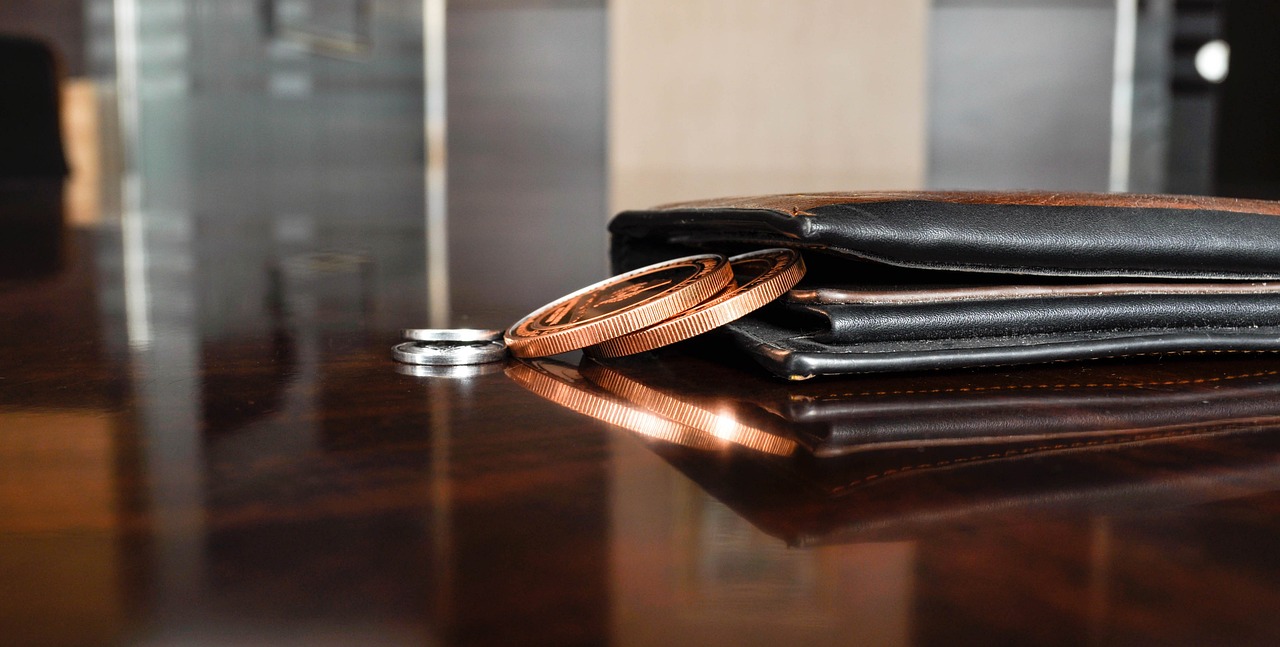
Consumer Preferences in Wallets
In the ever-evolving world of fashion and accessories, wallets hold a special place in consumer hearts. But what exactly do shoppers look for when they’re on the hunt for the perfect wallet? Understanding these preferences is crucial for manufacturers aiming to tailor their products effectively. One of the primary factors influencing purchasing decisions is design. Consumers are increasingly drawn to wallets that not only serve a functional purpose but also make a style statement. Sleek, minimalist designs are trending, as many people prefer wallets that are compact yet stylish, seamlessly fitting into their daily lives.
Another critical aspect is functionality. Today's consumers want wallets that do more than just hold cash and cards. Features like multiple compartments, RFID blocking technology, and even integrated tracking systems are becoming essential. Imagine a wallet that not only keeps your belongings secure but also connects to your smartphone, alerting you if you leave it behind! This blend of style and practicality is what modern buyers crave.
Moreover, the rising tide of sustainability cannot be ignored. As environmental consciousness grows, consumers are increasingly seeking out wallets made from eco-friendly materials. This shift is not just a passing trend; it reflects a deeper commitment to ethical consumption. Brands that prioritize sustainable practices are likely to foster loyalty among eco-conscious consumers. For instance, wallets crafted from recycled materials or vegan leather appeal to a demographic that values both style and sustainability.
To further illustrate these preferences, consider the following table that highlights key factors influencing wallet purchases:
| Factor | Importance Level |
|---|---|
| Design | High |
| Functionality | High |
| Sustainability | Medium |
| Brand Reputation | Medium |
| Price | High |
In summary, the wallet market is not just about functionality anymore; it’s about creating a product that resonates with consumers on multiple levels. Brands that can blend style, functionality, and sustainability are likely to capture the attention and loyalty of today’s discerning shoppers. As we move forward, keeping a pulse on these consumer preferences will be essential for manufacturers looking to thrive in this competitive landscape.
Q: What are the most important features to look for in a wallet?
A: Key features include design, functionality (like RFID blocking), and sustainability. Consumers are looking for wallets that are both stylish and practical.
Q: How does sustainability impact wallet purchases?
A: More consumers are prioritizing eco-friendly materials and ethical production practices, making sustainability a significant factor in their purchasing decisions.
Q: Are there any emerging trends in wallet design?
A: Yes, trends include minimalist designs, smart wallets with tech integration, and an emphasis on multifunctionality.

Emerging Technologies in Wallets
The wallet market is undergoing a significant transformation, largely driven by emerging technologies. As consumers become more tech-savvy, they are looking for wallets that do more than just hold cash and cards. This shift is prompting manufacturers to innovate and incorporate advanced functionalities into their products. One of the most notable developments is the incorporation of RFID-blocking technology, which protects users from electronic pickpocketing. Imagine walking through a crowded place, and suddenly you realize that your personal information is at risk. RFID-blocking wallets act like a fortress, shielding your data from unwanted scans.
Moreover, the rise of smart wallets is reshaping consumer expectations. These wallets often come equipped with features like Bluetooth tracking, which helps users locate their wallet via a smartphone app. It's like having a personal assistant that ensures you never lose your valuables. Some smart wallets even include built-in power banks to charge your devices on the go. This blend of practicality and technology is appealing to a generation that values convenience and connectivity.
Another exciting advancement is digital integration. Many wallets now offer seamless integration with mobile payment systems, allowing users to make transactions with just a tap of their phone. This trend is particularly popular among younger consumers who prioritize speed and efficiency in their shopping experiences. As a result, traditional wallets are being reimagined to accommodate these digital functionalities. Brands that embrace these changes are not just keeping up with the competition; they are setting the stage for the future of wallet design.
To illustrate the impact of these technologies, consider the following table that highlights key features of modern wallets:
| Wallet Type | Key Features | Target Audience |
|---|---|---|
| RFID-Blocking Wallets | Data protection, security | Security-conscious consumers |
| Smart Wallets | Bluetooth tracking, power banks | Tech-savvy individuals |
| Digital Wallets | Mobile payment integration | Young professionals |
As we move forward, it's crucial for wallet manufacturers to stay ahead of these technological trends. By understanding what features resonate with consumers, brands can create products that not only meet current demands but also anticipate future needs. The fusion of technology and design is not just a trend; it's becoming the new standard in the wallet market. So, whether you’re a manufacturer or a consumer, keeping an eye on these innovations will be essential in navigating this evolving landscape.
- What are RFID-blocking wallets?
RFID-blocking wallets are designed to prevent unauthorized scanning of your credit card information by using special materials that block radio waves.
- How do smart wallets work?
Smart wallets typically connect to your smartphone via Bluetooth, allowing you to track their location and sometimes even charge your devices.
- Are digital wallets safe to use?
Yes, digital wallets use encryption and other security measures to protect your financial information, making them a secure option for transactions.
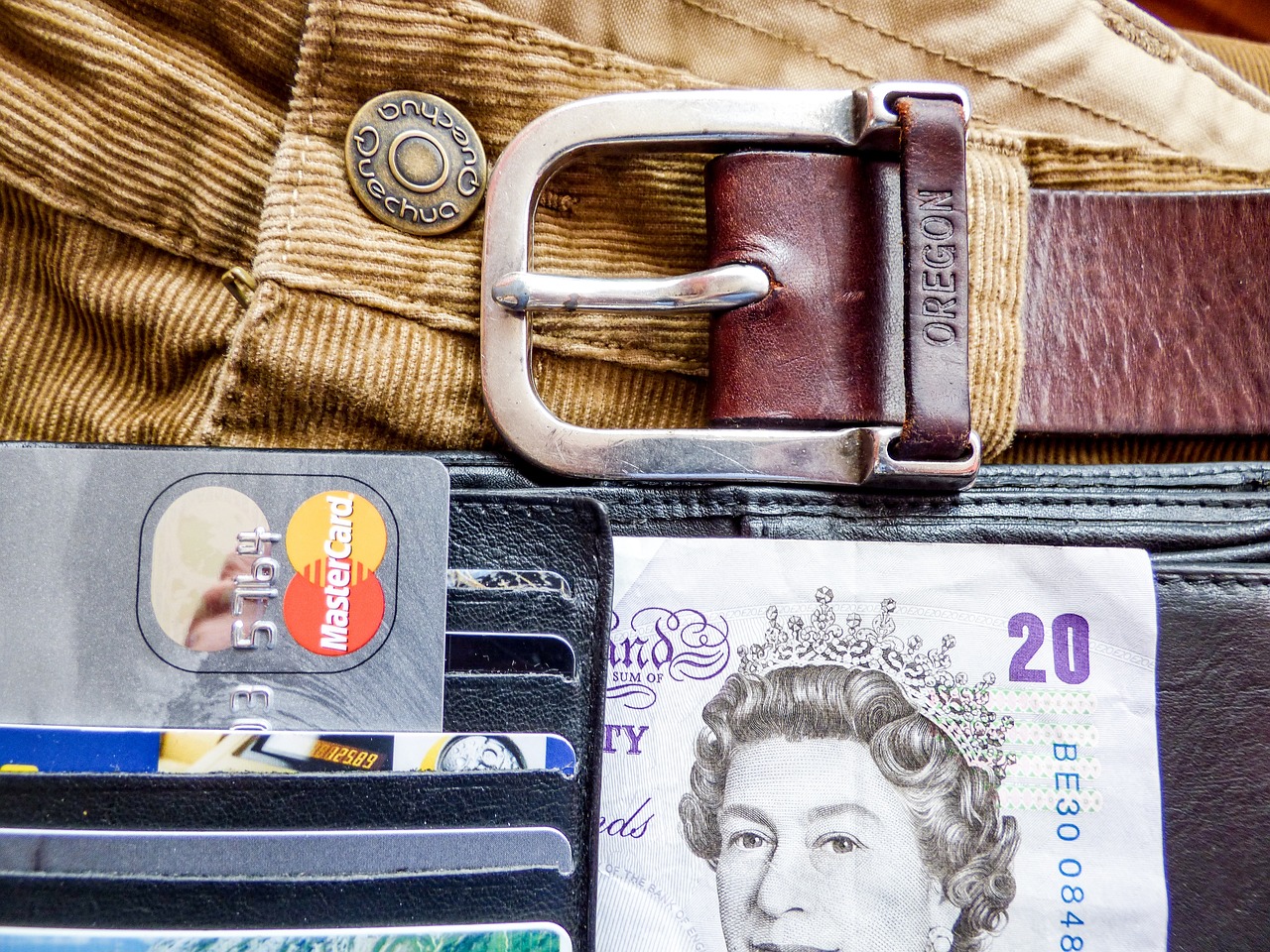
Sustainability in Wallet Manufacturing
Sustainability is no longer just a buzzword; it has become a crucial aspect of modern manufacturing, especially in the wallet industry. As consumers become more environmentally conscious, the demand for sustainable wallets has surged. This shift is not merely a trend but a reflection of a broader societal change where individuals are increasingly aware of their purchasing power and its impact on the planet. Wallet manufacturers are responding by integrating sustainable practices into their production processes, leading to a fascinating evolution in the marketplace.
One of the primary drivers of sustainability in wallet manufacturing is the use of eco-friendly materials. Brands are exploring a variety of options to minimize their environmental footprint. For instance, wallets made from recycled materials are gaining popularity as they help reduce waste and resource consumption. Additionally, vegan leather—crafted from synthetic materials or plant-based substances—offers a cruelty-free alternative to traditional leather, appealing to a growing demographic of ethical consumers. Biodegradable fabrics are also emerging, providing a solution that decomposes naturally, thereby lessening the long-term impact on landfills.
Moreover, ethical production practices play a significant role in enhancing sustainability. Transparency in the supply chain is becoming a key factor for consumers who want to ensure their purchases align with their values. Brands that are open about their sourcing and manufacturing processes are likely to build trust and loyalty among their customers. Fair labor practices are equally important; consumers are increasingly scrutinizing how workers are treated in the production of goods. By adopting these ethical practices, companies can not only improve their reputation but also attract a customer base that prioritizes social responsibility.
To illustrate the importance of sustainability in wallet manufacturing, consider the following table that outlines the various materials and their environmental impacts:
| Material | Environmental Impact | Consumer Appeal |
|---|---|---|
| Recycled Materials | Reduces waste and conserves resources | High |
| Vegan Leather | Animal-friendly and often more sustainable than traditional leather | Growing |
| Biodegradable Fabrics | Decomposes naturally, reducing landfill waste | Increasing |
As we look ahead, the wallet industry is poised for a significant transformation driven by sustainability. Companies that prioritize eco-friendly materials and ethical production methods will not only meet consumer demands but also set themselves apart in a crowded market. This commitment to sustainability can lead to innovative designs and practices that resonate with today's conscientious consumers.
- What materials are considered sustainable for wallets? Sustainable materials include recycled materials, vegan leather, and biodegradable fabrics.
- Why is ethical production important in wallet manufacturing? Ethical production ensures fair labor practices and transparency, which are increasingly valued by consumers.
- How can consumers identify sustainable wallet brands? Look for certifications, transparent supply chains, and brands that actively promote their sustainability efforts.

Materials Used in Eco-Friendly Wallets
In recent years, there has been a significant shift towards sustainability in consumer products, and wallets are no exception. As more people become aware of the environmental impact of their purchases, the demand for eco-friendly wallets has surged. These wallets are not just about style; they represent a conscious choice towards a more sustainable lifestyle. But what materials are making waves in the eco-friendly wallet market? Let's dive into some of the most popular options.
One of the standout materials is recycled fabrics. Many brands are now utilizing fabrics made from post-consumer waste, such as plastic bottles. This not only reduces landfill waste but also conserves resources that would have been used to produce new materials. These wallets can be just as stylish and durable as their traditional counterparts, proving that sustainability doesn’t have to compromise aesthetics.
Another exciting option is vegan leather, which is typically made from polyurethane or other synthetic materials. Unlike traditional leather, which involves animal cruelty and significant environmental degradation, vegan leather offers a cruelty-free alternative that appeals to conscious consumers. It's versatile, easy to clean, and can mimic the look and feel of real leather, making it a popular choice for many brands.
Additionally, biodegradable fabrics are gaining traction. These materials can break down naturally over time, reducing their impact on the environment. Brands are exploring options like organic cotton, hemp, and even innovative materials derived from mushrooms or pineapple leaves. These fabrics not only contribute to a lower carbon footprint but also appeal to consumers looking for unique and trendy designs.
When it comes to eco-friendly wallets, it's essential to consider not just the materials used, but also the overall production process. Many brands are now focusing on ethical sourcing and transparency in their supply chains. This means that the materials are sourced responsibly, and the workers involved in the production are treated fairly. Consumers are increasingly valuing brands that prioritize ethical practices, making it a crucial factor in their purchasing decisions.
As the demand for eco-friendly wallets continues to grow, manufacturers are likely to innovate further, exploring new materials and production techniques. The future of wallet design is not just about functionality and fashion; it's about making choices that benefit the planet. By opting for wallets made from recycled materials, vegan leather, and biodegradable fabrics, consumers can play a part in reducing waste and promoting sustainability. The wallet you choose can be a reflection of your values, making a statement that goes beyond just carrying cash and cards.
- What are eco-friendly wallets made from?
Eco-friendly wallets are typically made from materials like recycled fabrics, vegan leather, and biodegradable materials such as organic cotton or hemp. - Are eco-friendly wallets durable?
Yes, many eco-friendly wallets are designed to be just as durable and stylish as traditional wallets, often using innovative materials that enhance their longevity. - How can I ensure I'm buying a truly eco-friendly wallet?
Look for brands that provide transparency about their materials and production processes. Certifications and labels can also help indicate sustainability. - Why should I choose an eco-friendly wallet?
Choosing an eco-friendly wallet supports sustainable practices, reduces waste, and often aligns with ethical consumption values.

Ethical Production Practices
In today's world, where consumers are increasingly aware of the impact of their purchases, have become a cornerstone of brand reputation in the wallet industry. Consumers are not just looking for a stylish wallet; they want to know that their purchase supports fair labor practices and sustainable methods. This shift in consumer behavior is reshaping how brands approach their manufacturing processes.
Brands that prioritize ethical production often highlight their commitment to transparency. They openly share information about their supply chains, ensuring that consumers can trace the origins of their products. This level of transparency builds trust and fosters a deeper connection between the brand and its customers. When consumers know that their wallets are made in factories that uphold fair wages and safe working conditions, they feel good about their choices. It's like knowing that your favorite coffee not only tastes great but also supports farmers who receive fair compensation for their hard work.
Moreover, ethical production practices are not just a marketing gimmick; they reflect a genuine commitment to social responsibility. Companies that adopt these practices tend to engage in community development initiatives, contributing positively to the areas where they operate. This can include investing in local education, healthcare, or environmental projects. By doing so, brands not only enhance their image but also create a ripple effect of positive change.
So, what are some key aspects of ethical production in the wallet industry? Here are a few essential elements:
- Fair Labor Practices: Ensuring that workers are paid fairly and work in safe conditions is paramount. Brands often conduct audits and partner with organizations that promote labor rights.
- Transparency: Clear communication about sourcing and manufacturing processes helps build consumer trust. Brands may publish reports detailing their practices.
- Community Engagement: Supporting local initiatives and giving back to communities can enhance a brand's reputation and foster loyalty among consumers.
In conclusion, the shift towards ethical production practices is not just a trend; it’s a fundamental change in how consumers view their purchases. As more brands adopt these practices, the wallet market will likely see a surge in demand for products that align with consumers' values. This evolution presents an exciting opportunity for brands to stand out in a crowded marketplace by showcasing their commitment to ethical standards. After all, when consumers feel good about their purchases, they are more likely to become loyal advocates for the brand.
Q1: What are ethical production practices?
A1: Ethical production practices refer to manufacturing processes that prioritize fair labor conditions, transparency, and environmental sustainability.
Q2: Why are consumers interested in ethical production?
A2: Consumers are becoming more aware of the impact of their purchases on the environment and society, leading them to seek brands that align with their values.
Q3: How can I tell if a wallet brand follows ethical production practices?
A3: Look for brands that provide information about their supply chains, labor practices, and sustainability efforts. Certifications from recognized organizations can also be a good indicator.

Market Competition and Brand Strategies
The wallet market is a bustling arena, where brands are in a constant race to capture consumer attention and loyalty. With countless options available, it’s crucial for manufacturers to not only understand their competitors but also to carve out a unique identity that resonates with their target audience. This competition isn’t just about who has the flashiest design; it’s about a holistic approach that combines innovation, quality, and customer engagement.
One of the key strategies brands are employing is the focus on niche markets. For instance, some companies are catering specifically to tech-savvy consumers by integrating smart technology into their wallets. Others are targeting eco-conscious buyers with sustainable materials and ethical production practices. By identifying and addressing specific consumer needs, brands can differentiate themselves from the competition and foster brand loyalty.
Moreover, the digital landscape has opened up new avenues for competition. Brands are leveraging social media platforms and influencer partnerships to reach wider audiences and create an engaging brand narrative. This approach not only enhances brand visibility but also builds a community around the product. For example, a wallet brand might collaborate with a popular lifestyle influencer to showcase its products in real-life scenarios, thus bridging the gap between marketing and authentic consumer experience.
Additionally, understanding consumer behavior through data analytics plays a pivotal role in shaping brand strategies. By analyzing purchasing patterns, preferences, and feedback, brands can tailor their offerings to meet evolving demands. This data-driven approach allows companies to stay ahead of trends and make informed decisions about product development and marketing strategies.
To illustrate the competitive landscape, consider the following table that outlines some of the leading brands in the wallet market and their unique selling propositions:
| Brand | Unique Selling Proposition |
|---|---|
| Brand A | Smart wallets with RFID blocking technology |
| Brand B | Eco-friendly wallets made from recycled materials |
| Brand C | Customizable wallets for personal expression |
| Brand D | Luxury wallets with premium craftsmanship |
In conclusion, navigating the competitive wallet market requires a blend of creativity, strategic marketing, and a deep understanding of consumer preferences. Brands that can effectively communicate their unique value propositions while staying attuned to market shifts are more likely to thrive in this dynamic environment.
- What are the key factors influencing wallet purchases? Design, functionality, sustainability, and brand reputation are critical factors.
- How are brands differentiating themselves in the wallet market? By targeting niche markets, utilizing innovative technologies, and implementing unique marketing strategies.
- What role does sustainability play in consumer choices? A growing number of consumers prefer eco-friendly products, making sustainability a significant factor in purchasing decisions.
- How can brands leverage social media for marketing wallets? By collaborating with influencers and creating engaging content that resonates with their audience.
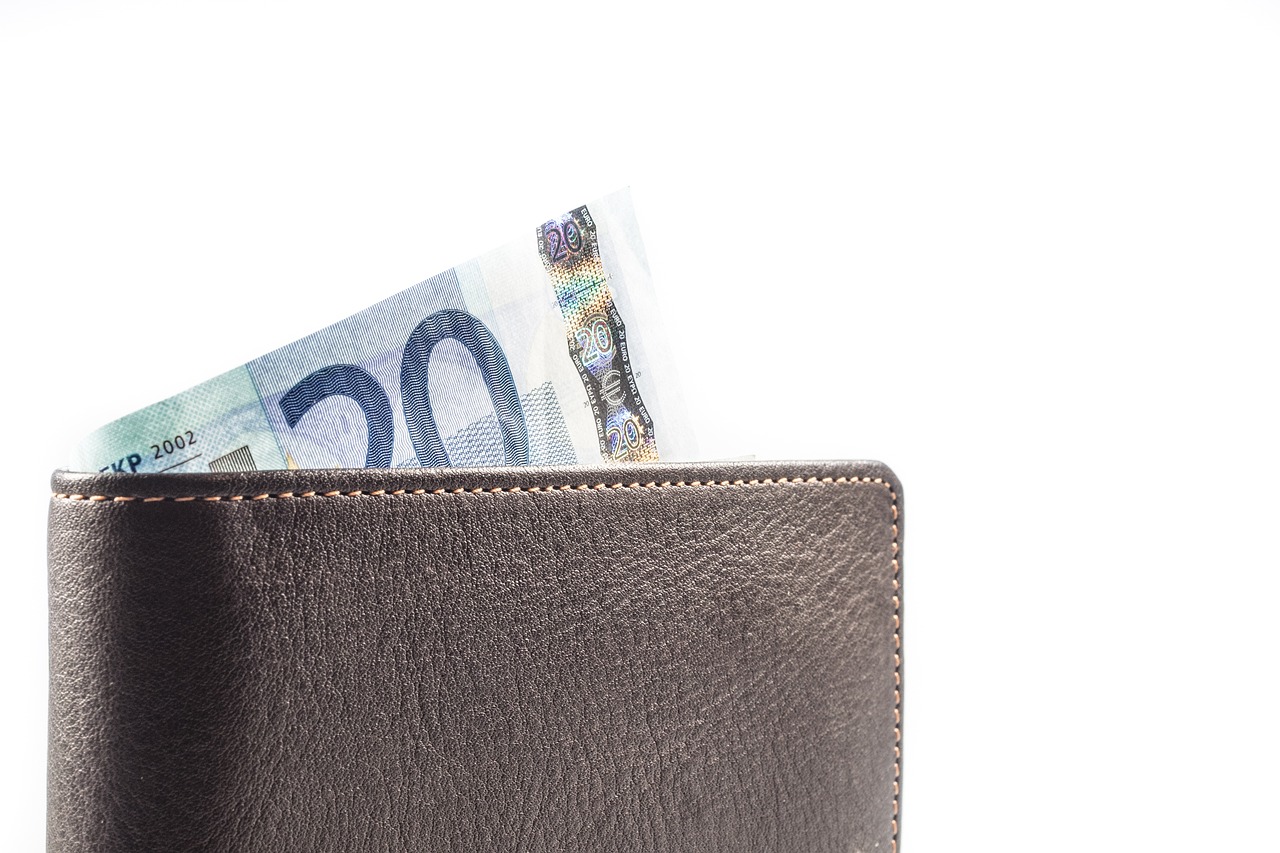
Impact of E-commerce on Wallet Sales
The rise of e-commerce has dramatically reshaped the landscape of wallet sales, introducing both exciting opportunities and formidable challenges for brands in the industry. Gone are the days when consumers would meander through brick-and-mortar stores, flipping through various wallet options. Now, with just a few clicks, shoppers can explore a vast array of choices from the comfort of their homes. This shift has not only changed how wallets are marketed but also how they are perceived by consumers. So, what does this mean for wallet manufacturers and retailers?
Firstly, the accessibility of online shopping has expanded the potential customer base. Consumers from all corners of the globe can now browse and purchase wallets, allowing brands to reach markets they may have never considered. This increased visibility is crucial in a competitive market where brand differentiation is key. However, with this opportunity comes the challenge of standing out in a saturated online marketplace. Brands must be strategic in their marketing efforts to capture the attention of potential buyers.
Moreover, the influence of social media cannot be overstated. Platforms like Instagram and TikTok have become powerful tools for wallet brands, enabling them to showcase their products through visually appealing content. Influencers play a pivotal role in this landscape, acting as modern-day brand ambassadors who can sway consumer preferences with their recommendations. As a result, wallet brands are increasingly investing in online marketing strategies that leverage these platforms to enhance brand visibility and engage with their audience effectively.
However, e-commerce also brings its own set of challenges. The competition is fierce, with countless brands vying for the attention of the same audience. This necessitates a robust online presence and a deep understanding of consumer behavior. Brands must continuously analyze market trends and consumer feedback to adapt their strategies accordingly. Additionally, the logistics of e-commerce—such as shipping, returns, and customer service—can be daunting. A seamless shopping experience is essential; if customers encounter difficulties, they are likely to abandon their carts and seek alternatives.
To illustrate the impact of e-commerce on wallet sales, consider the following table that outlines key statistics:
| Statistic | Impact on Wallet Sales |
|---|---|
| Percentage of consumers who shop online | Over 70% of shoppers prefer online shopping for its convenience |
| Growth of e-commerce sales (2021-2023) | Projected growth of 15% annually in the accessories market |
| Influencer marketing effectiveness | Brands report a 30% increase in sales when partnering with influencers |
In conclusion, the impact of e-commerce on wallet sales is profound and multifaceted. While it opens up new avenues for growth and engagement, it also requires brands to be agile and innovative. As consumers continue to embrace the ease of online shopping, wallet manufacturers must adapt to these changing dynamics to remain competitive in this ever-evolving market.
- How has e-commerce changed consumer behavior in the wallet market?
E-commerce has made shopping more convenient, allowing consumers to easily compare products and prices, which influences their purchasing decisions. - What role do social media influencers play in wallet sales?
Influencers can significantly boost brand visibility and credibility, leading to increased sales through their recommendations and engaging content. - What challenges do wallet brands face in the e-commerce space?
Brands must navigate fierce competition, ensure efficient logistics, and maintain a strong online presence to attract and retain customers.
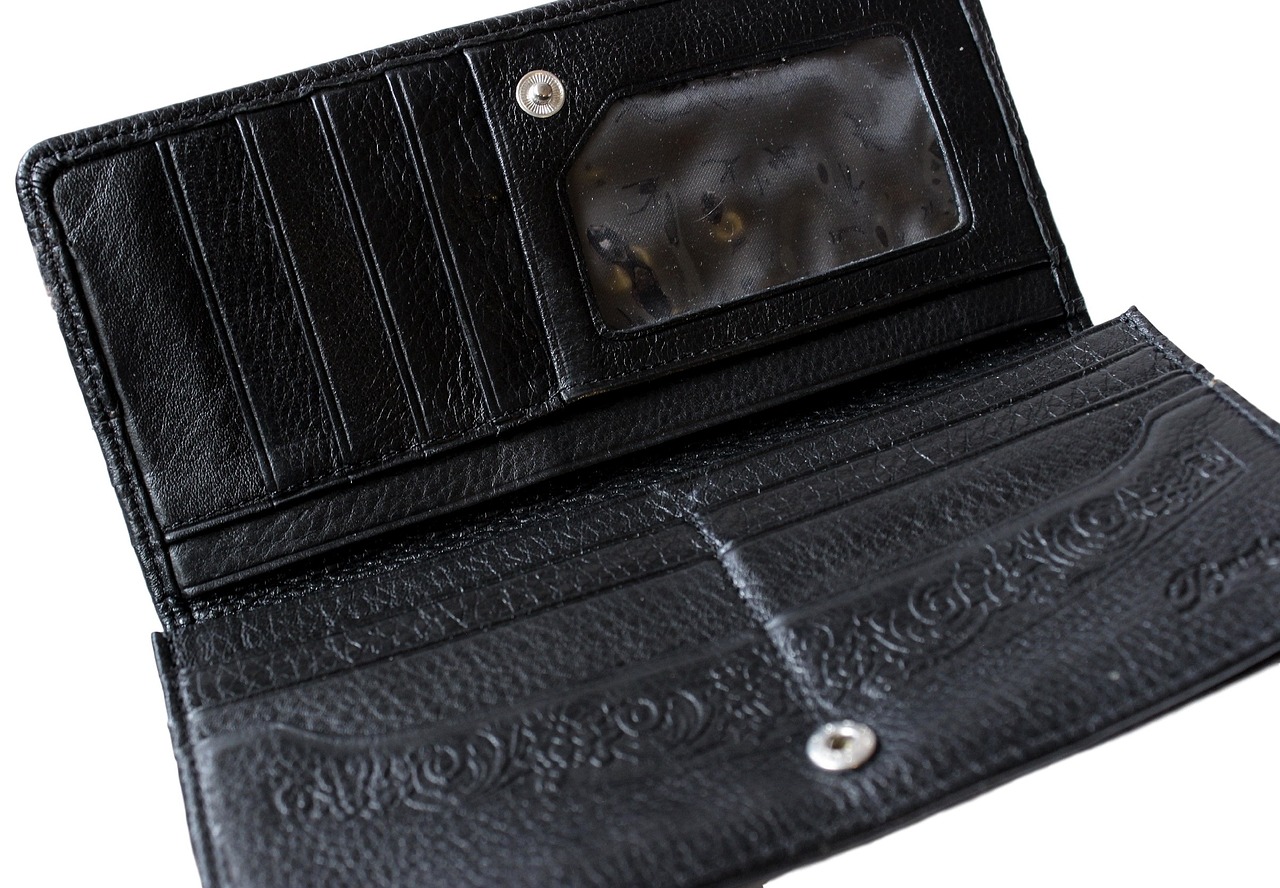
Online Marketing Strategies for Wallet Brands
In today's digital age, having a robust online marketing strategy is essential for wallet brands looking to stand out in a crowded marketplace. With consumers increasingly turning to e-commerce for their purchases, brands must leverage various online platforms to effectively reach their target audience. One of the most powerful tools at their disposal is social media. Utilizing platforms like Instagram, Facebook, and Pinterest allows wallet brands to showcase their products visually, engaging potential customers with stunning imagery and compelling narratives. Think of social media as a digital storefront that never closes, providing brands with the opportunity to connect with consumers anytime, anywhere.
Moreover, influencer partnerships have gained immense popularity in recent years. By collaborating with influencers who resonate with their target demographic, wallet brands can amplify their reach and credibility. These influencers act as trusted voices, guiding their followers towards products they love. Imagine having a friend recommend a wallet that perfectly suits your style; that’s the power of influencer marketing! Brands can curate collections or even launch exclusive lines in collaboration with these influencers to create a buzz and drive sales.
Another vital aspect of online marketing is content creation. Brands should consider developing engaging blog posts, videos, and tutorials that provide value to their audience. For example, a wallet brand could create a video series on how to choose the right wallet based on lifestyle needs or even tips on wallet organization. This not only positions the brand as an authority in the space but also fosters a sense of community among consumers. After all, who doesn’t love learning something new while shopping?
Additionally, email marketing remains a powerful tool for wallet brands. By building a mailing list, brands can send personalized offers, product updates, and exclusive discounts directly to consumers' inboxes. This direct line of communication helps brands maintain engagement and nurture customer loyalty. Think of it as a friendly reminder that your favorite wallet brand has something special just for you!
Finally, brands must not overlook the importance of SEO (Search Engine Optimization). By optimizing their website and content for search engines, wallet brands can improve their visibility and attract organic traffic. This includes using relevant keywords, creating high-quality content, and ensuring a user-friendly website experience. After all, what good is a fantastic wallet if no one can find it online?
In conclusion, the landscape of online marketing for wallet brands is ever-evolving, requiring a blend of creativity, strategy, and adaptability. By embracing social media, influencer partnerships, engaging content, email marketing, and SEO, brands can effectively navigate the digital marketplace and connect with consumers in meaningful ways.
Q: What are the best social media platforms for wallet brands?
A: Instagram and Facebook are particularly effective for visually showcasing wallet designs, while Pinterest can drive traffic through curated boards.
Q: How can I find the right influencer for my wallet brand?
A: Look for influencers whose style aligns with your brand values and who have a genuine connection with their audience. Check their engagement rates and previous collaborations.
Q: Why is SEO important for online marketing?
A: SEO helps improve your website’s visibility on search engines, making it easier for potential customers to discover your wallet brand when searching for relevant products.
Q: What type of content should wallet brands create?
A: Brands can create product tutorials, style guides, and blog posts that resonate with their audience, providing value while promoting their products.

Challenges of E-commerce for Wallet Manufacturers
As the digital marketplace continues to expand, wallet manufacturers face a myriad of challenges that can impact their success. One of the most significant hurdles is the **increased competition** from both established brands and new entrants. With numerous options available online, consumers can easily compare prices and features, making it crucial for brands to stand out in a crowded market. This competition not only drives prices down but also demands that manufacturers continuously innovate to capture consumer interest.
Another challenge is the **need for robust logistics**. Unlike traditional retail, where customers can physically inspect products, online shoppers rely heavily on the accuracy of product descriptions and images. If a wallet does not meet expectations upon delivery, it can lead to increased return rates, which can be costly for manufacturers. To mitigate this risk, brands must invest in high-quality photography and detailed product descriptions that accurately represent their wallets.
Moreover, the **complexities of digital marketing** cannot be overlooked. Wallet manufacturers need to develop effective online marketing strategies that resonate with their target audience. This includes utilizing social media platforms, search engine optimization (SEO), and influencer partnerships to enhance brand visibility. However, navigating the ever-changing algorithms of social media and search engines can be daunting. Brands must stay updated on the latest trends and consumer behaviors to effectively engage their audience.
Additionally, the **customer experience** plays a pivotal role in e-commerce success. Online shoppers expect seamless navigation, quick load times, and easy checkout processes. If a website is slow or complicated, potential customers may abandon their carts in frustration. Therefore, wallet manufacturers must ensure their e-commerce platforms are user-friendly and optimized for mobile devices, as an increasing number of consumers shop on their smartphones.
Lastly, **data security** is a critical concern in the e-commerce landscape. With the rise in online transactions, consumers are more aware of the risks associated with sharing personal and financial information. Wallet manufacturers must implement strong security measures to protect customer data and build trust. This includes using secure payment gateways and clearly communicating privacy policies to reassure consumers that their information is safe.
In summary, while e-commerce presents exciting opportunities for wallet manufacturers, it also comes with its fair share of challenges. By addressing increased competition, logistics issues, digital marketing complexities, customer experience, and data security, brands can navigate the e-commerce landscape more effectively and thrive in this evolving market.
- What are the main challenges wallet manufacturers face in e-commerce?
The main challenges include increased competition, logistics issues, digital marketing complexities, customer experience, and data security concerns. - How can wallet brands improve their online presence?
By investing in effective digital marketing strategies, optimizing their e-commerce platforms for user experience, and ensuring high-quality product representations. - Why is data security important for e-commerce?
Data security is crucial to protect customer information and build trust, which is essential for encouraging online purchases.

Future Trends in Wallet Design
As we look ahead, the wallet industry is poised for some exciting transformations that will redefine how we perceive and use wallets. With the rapid evolution of technology and changing consumer preferences, the future of wallet design is not just about aesthetics; it's about functionality, sustainability, and smart integration. Imagine a wallet that not only holds your cash and cards but also connects seamlessly to your smartphone, tracks your spending habits, and even helps you make eco-friendly choices. This is not a distant dream; it's the direction in which wallet design is heading.
One of the most significant trends we can expect is the integration of smart technology. Smart wallets equipped with features like Bluetooth tracking, biometric security, and built-in payment systems are becoming increasingly popular. These wallets can connect to your smartphone, allowing you to locate them if lost and even alert you when you leave them behind. Think of it as a personal assistant that keeps your essentials safe and sound. The convenience of these features is hard to resist, especially for the tech-savvy consumer.
Moreover, the demand for sustainable materials will continue to rise. More brands are recognizing the importance of eco-consciousness in their production processes. Wallets made from recycled materials, such as plastic bottles or old fabric, are gaining traction. Not only do these materials help reduce waste, but they also resonate with environmentally aware consumers. Imagine pulling out a wallet made from recycled ocean plastic at a café; it’s a conversation starter and a statement of your values!
In addition to sustainability, the aesthetic aspect of wallet design is shifting towards minimalism and versatility. Consumers are increasingly favoring sleek, compact designs that can hold the essentials without the bulk. This shift aligns with the growing trend of digital wallets, where physical cash is becoming less relevant. A wallet that can easily fit in your pocket or bag while still offering functionality is the new norm. Brands are also experimenting with modular designs, allowing users to customize their wallets based on their specific needs.
Furthermore, the rise of gender-neutral designs is another trend to watch. Traditionally, wallets have been marketed towards specific demographics, but the lines are blurring as consumers seek products that cater to their personal style rather than their gender. This shift opens up a world of possibilities for brands to create inclusive designs that appeal to a broader audience. Imagine a wallet that looks equally appealing to everyone, regardless of gender. It’s about embracing diversity and celebrating individuality.
Finally, as we move into the future, digital integration will play a crucial role in wallet design. With the increase in contactless payments and digital currencies, wallets are evolving to accommodate these changes. Expect to see wallets that not only hold physical cards but also have the capability to store digital currencies and facilitate transactions with a simple tap. This integration will make wallets not just a storage solution but a comprehensive financial tool.
In summary, the future of wallet design is bright and full of possibilities. From smart technology and sustainable materials to minimalistic aesthetics and digital integration, the wallet industry is set to revolutionize how we carry our essentials. As brands adapt to these trends, consumers will benefit from innovative products that align with their lifestyles and values.
- What are smart wallets? Smart wallets are advanced wallets that incorporate technology such as Bluetooth tracking and biometric security features.
- Why are sustainable materials important in wallet design? Sustainable materials reduce environmental impact and appeal to eco-conscious consumers.
- Will wallets become obsolete with digital payments? While digital payments are on the rise, physical wallets will continue to evolve to include features that complement digital transactions.
- What is the trend towards minimalism in wallets? Consumers are favoring sleek designs that hold essentials without bulk, reflecting a shift in lifestyle preferences.
Frequently Asked Questions
- What factors should I consider when choosing a wallet?
When selecting a wallet, think about design, functionality, and sustainability. Do you prefer a minimalist look, or do you need something with more compartments? Also, consider whether you want eco-friendly materials that align with your values.
- What are RFID-blocking wallets and why are they important?
RFID-blocking wallets are designed to protect your cards from unauthorized scanning. With the rise of contactless payments, these wallets are becoming essential for safeguarding your personal information from potential theft.
- How are wallet brands addressing sustainability?
Many wallet brands are now using recycled materials, vegan leather, and biodegradable fabrics. This shift not only helps reduce environmental impact but also appeals to consumers who prioritize eco-friendliness in their purchasing decisions.
- What impact has e-commerce had on wallet sales?
E-commerce has revolutionized how wallets are marketed and sold. Online shopping allows brands to reach a wider audience, but it also means they must compete with numerous other brands, making effective marketing strategies crucial.
- What are some effective online marketing strategies for wallet brands?
Social media campaigns and influencer partnerships are powerful tools for boosting visibility. Engaging content that resonates with consumers can significantly drive sales and enhance brand loyalty in the digital landscape.
- What challenges do wallet manufacturers face in the e-commerce space?
While e-commerce opens up new opportunities, it also brings challenges like increased competition and the need for efficient logistics. Brands must adapt to these challenges to thrive in the ever-evolving online marketplace.
- How can I stay updated on future wallet trends?
Keeping an eye on industry news, following popular brands on social media, and reading consumer reviews can help you stay informed about emerging trends in wallet design and functionality.



